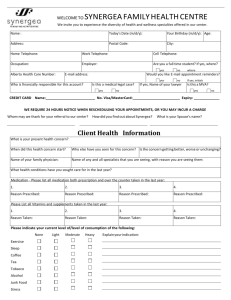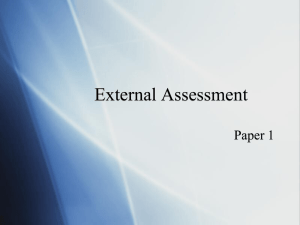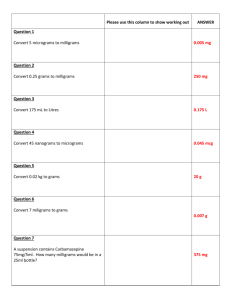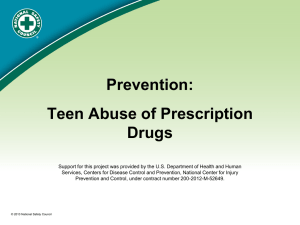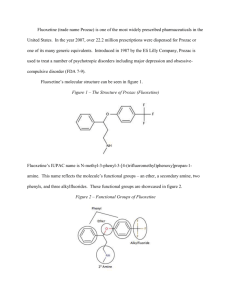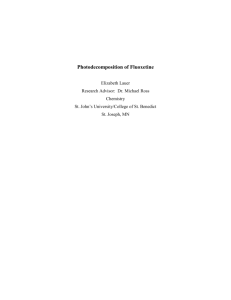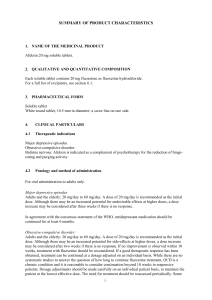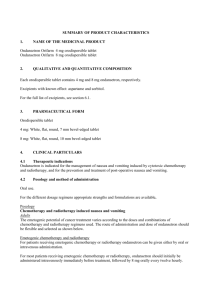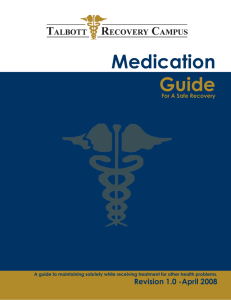AdvMT_Ch21_Prac_Appl
advertisement
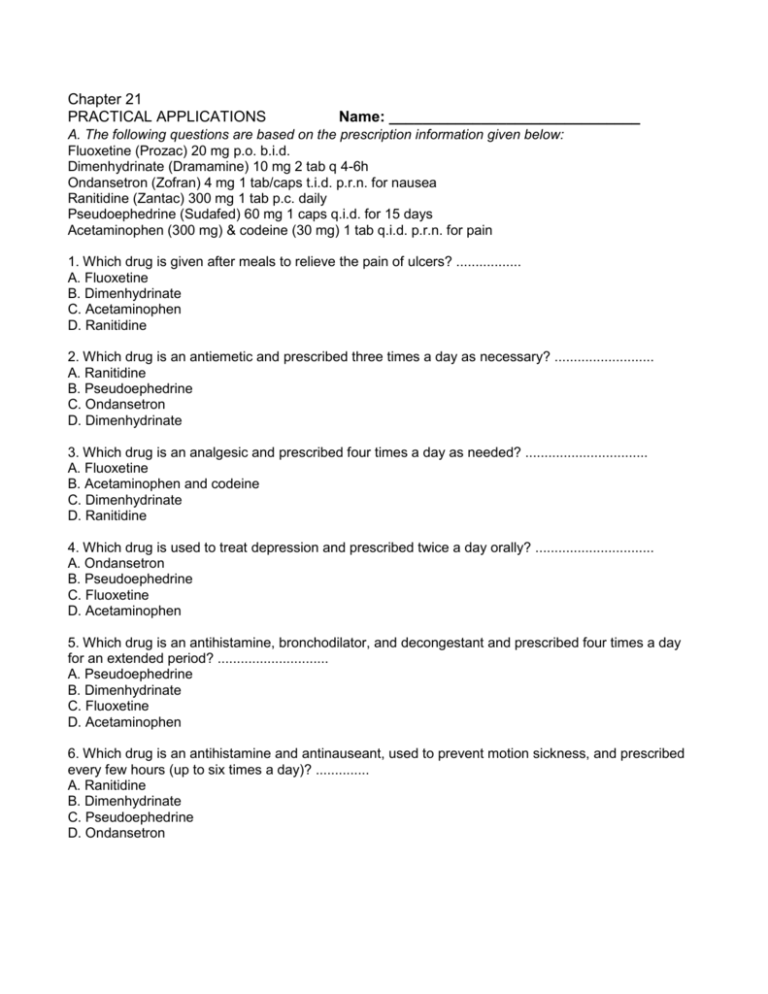
Chapter 21 PRACTICAL APPLICATIONS Name: ______________________________ A. The following questions are based on the prescription information given below: Fluoxetine (Prozac) 20 mg p.o. b.i.d. Dimenhydrinate (Dramamine) 10 mg 2 tab q 4-6h Ondansetron (Zofran) 4 mg 1 tab/caps t.i.d. p.r.n. for nausea Ranitidine (Zantac) 300 mg 1 tab p.c. daily Pseudoephedrine (Sudafed) 60 mg 1 caps q.i.d. for 15 days Acetaminophen (300 mg) & codeine (30 mg) 1 tab q.i.d. p.r.n. for pain 1. Which drug is given after meals to relieve the pain of ulcers? ................. A. Fluoxetine B. Dimenhydrinate C. Acetaminophen D. Ranitidine 2. Which drug is an antiemetic and prescribed three times a day as necessary? .......................... A. Ranitidine B. Pseudoephedrine C. Ondansetron D. Dimenhydrinate 3. Which drug is an analgesic and prescribed four times a day as needed? ................................ A. Fluoxetine B. Acetaminophen and codeine C. Dimenhydrinate D. Ranitidine 4. Which drug is used to treat depression and prescribed twice a day orally? ............................... A. Ondansetron B. Pseudoephedrine C. Fluoxetine D. Acetaminophen 5. Which drug is an antihistamine, bronchodilator, and decongestant and prescribed four times a day for an extended period? ............................. A. Pseudoephedrine B. Dimenhydrinate C. Fluoxetine D. Acetaminophen 6. Which drug is an antihistamine and antinauseant, used to prevent motion sickness, and prescribed every few hours (up to six times a day)? .............. A. Ranitidine B. Dimenhydrinate C. Pseudoephedrine D. Ondansetron B. FYI Drugs taken by a mother during pregnancy may have harmful effects on the fetus or newborn. Some examples are analgesics (heroin, morphine) that produce respiratory depression, addiction, and neonatal mortality; anesthetics that produce fetal bradycardia; anticoagulants that lead to hemorrhage and fetal death; hormones (androgens and estrogens) that produce masculinization or clitoromegaly. 1. What drug can produce slow heartbeat in the fetus? ...................... A. Testosterone B. Morphine C. Anesthetic D. Anticoagulant 2. What drug, taken by the mother, puts the fetus at risk for bleeding? .............. A. Estrogen B. Anticoagulant C. Heroin D. Anesthetic C. Drug Identifications Match the following drugs with a description that fits it below. Write the name of the drug in the space provided. Bactrim (trimethoprim/sulfamethoxazole) Lovenox (enoxaparin sodium) Benadryl (diphenhydramine) Motrin (ibuprofen) BuSpar (buspirone) Nolvadex (tamoxifen) Fosamax (alendronate sodium) Prevacid (lansoprazole) Lasix (furosemide) Vasotec (enalapril) 1. This is a nonsteroidal antiestrogen medication indicated for the treatment of breast cancer in postmenopausal women. It is used when tumor cells are estrogen-receptor positive. It can be used to prevent breast cancer in women at high risk. _________________________________________ 2. This is a potent diuretic to treat edema associated with congestive heart failure. _____________________________________________________________________ 3. This is a nonsteroidal anti-inflammatory drug (NSAID) used to relieve the pain and inflammation of arthritis. It is also indicated for use to treat fever, dysmenorrhea, and mild to moderate pain. ________________________________________________________________ 4. This is a nonprescription antihistamine often used for severe allergic reactions (bee stings or poison ivy) and nasal allergy symptoms. It may also be used as an antipruritic (cream or lotion), sleep aid, or cough suppressant. __________________________________________________ 5. This antibiotic medication is prescribed to treat urinary tract infections, acute otitis media, and respiratory infections. __________________________________________________________ 6. This medication is indicated for the treatment and prevention of osteoporosis in postmenopausal women. It increases bone mass to help reduce the incidence of fractures, such as in the wrist and spine. ________________________________________________________ 7. This tranquilizer is prescribed for a patient with diagnosed general anxiety disorder. ___________________________________________________________________ 8. This medication is commonly prescribed to treat duodenal and gastric ulcers. ____________________________________________________________________ 9. This angiotensin-converting enzyme (ACE) inhibitor is indicated for the treatment of hypertension, heart failure, and in patients after MI, when the function of the left ventricle of the heart has been affected. _________________________________________________________________________ 10. This is a low-molecular-weight heparin, indicated for the prevention of deep vein thrombosis, which may lead to pulmonary embolism in patients undergoing surgery (e.g., hip or knee replacement). It is usually administered by injection. ____________________________________

